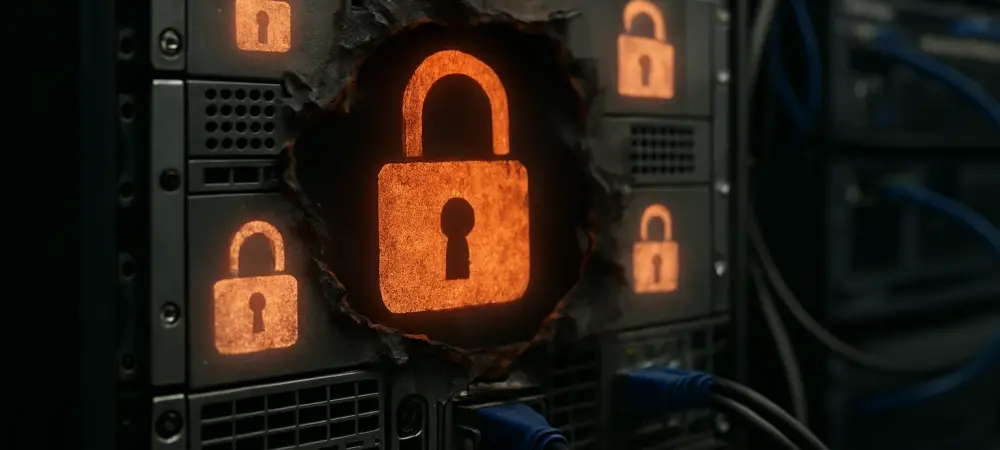Introduction
Imagine a sophisticated cyberattack breaching an organization’s on-premises email server, silently escalating privileges into its connected cloud environment, and compromising sensitive data without leaving a trace. This alarming scenario underscores a growing concern in cybersecurity: the vulnerabilities inherent in hybrid Exchange environments. As organizations increasingly rely on these setups to manage email systems—bridging on-premises and cloud solutions—the urgency to address security flaws has never been more critical, a point emphasized by both Microsoft and the US Cybersecurity and Infrastructure Security Agency (CISA). This analysis delves into the nature of hybrid Exchange systems, examines specific high-severity vulnerabilities like CVE-2025-53786, incorporates expert perspectives, explores future implications, and offers actionable insights for safeguarding these complex environments.
Understanding Hybrid Exchange Environments and Their Risks
Adoption and Growth of Hybrid Deployments
Hybrid Exchange deployments have surged in popularity as organizations seek a seamless transition between on-premises infrastructure and cloud-based solutions like Exchange Online. Microsoft reports that a significant percentage of enterprises have adopted this model to leverage the control of on-premises systems alongside the scalability of the cloud. This trend reflects a strategic approach to modernizing IT infrastructure while maintaining legacy systems during migration phases.
The appeal of hybrid setups lies in tangible benefits such as secure mail routing across on-premises and cloud organizations, the ability to maintain a shared domain namespace, and features like calendar sharing that enhance collaboration. These advantages make hybrid configurations a practical choice for businesses balancing operational needs with digital transformation goals.
Supporting this trend, industry data indicates that a substantial number of large organizations—spanning sectors like finance and healthcare—rely on hybrid Exchange for email management. This widespread adoption highlights the critical role these systems play in maintaining business continuity, even as they introduce unique security challenges that demand attention.
Real-World Vulnerabilities and Exploits
Among the most pressing threats to hybrid Exchange environments is CVE-2025-53786, a high-severity vulnerability that enables attackers with administrative access to an on-premises server to escalate privileges into the connected cloud environment. Microsoft has warned that such exploits can occur without leaving easily detectable traces, posing a significant risk to organizational security.
A potential attack scenario might involve a malicious actor gaining admin rights on an on-premises server and using this vulnerability to manipulate permissions in the cloud, accessing sensitive data or disrupting services. The shared service principal identity between on-premises and cloud systems exacerbates this risk, creating a direct pathway for attackers to pivot across environments.
Beyond this specific flaw, broader risks persist with outdated or end-of-life systems, such as public-facing Exchange or SharePoint servers like SharePoint Server 2013. CISA strongly advises disconnecting these unsupported systems from the internet to prevent exploitation, emphasizing that unpatched or obsolete infrastructure remains a prime target for cybercriminals.
Expert Perspectives on Hybrid Exchange Security Challenges
Johannes Ullrich, dean of research at the SANS Institute, has observed a notable decline in the number of organizations maintaining on-premises Exchange servers, largely due to past vulnerabilities and Microsoft’s push toward cloud solutions. He notes that managing these legacy systems has become increasingly complex, often requiring specialized expertise that many organizations lack.
While acknowledging the risks posed by vulnerabilities like CVE-2025-53786, Ullrich cautions against overreacting to the threat of cloud pivoting if attackers already possess admin access. He argues that such a breach already represents a critical failure, and the ability to escalate privileges may not significantly heighten the overall danger, though it does streamline an attacker’s path to broader compromise.
His primary recommendation focuses on strategic planning: organizations should prioritize transitioning fully to cloud-based solutions rather than continuing to support on-premises Exchange. Additionally, Ullrich stresses the importance of meticulous patching and configuration testing to mitigate risks, recognizing that maintaining secure hybrid environments demands consistent vigilance and resources.
Future Implications of Hybrid Exchange Security Trends
Looking ahead, the trajectory of hybrid Exchange environments appears to favor full cloud migration, as the challenges of securing on-premises systems continue to mount. While hybrid setups offer transitional benefits, the long-term sustainability of maintaining dual infrastructures is questionable, especially given the evolving sophistication of cyber threats.
Microsoft is likely to introduce enhanced security protocols and hotfixes to address vulnerabilities in hybrid configurations, alongside industry-wide shifts toward cloud-native architectures. These advancements could include more robust authentication mechanisms or automated tools to detect and prevent privilege escalation across environments, providing a stronger defense against attacks.
However, organizations that remain reliant on hybrid systems must prepare for increasingly complex attack vectors. Proactive measures—such as regular audits, timely updates, and strategic planning for cloud adoption—will be essential to mitigate risks.
Conclusion and Call to Action
Reflecting on the discussions around hybrid Exchange vulnerabilities, it becomes clear that threats like CVE-2025-53786 pose significant challenges to organizations straddling on-premises and cloud environments. Expert insights underscore the diminishing viability of maintaining legacy systems, while future outlooks point to a cloud-centric shift in email management.
To move forward, administrators are encouraged to take decisive steps, including applying Microsoft’s recommended hotfixes and resetting service principal credentials to secure hybrid setups. Running diagnostic tools like the Microsoft Exchange Health Checker also emerges as a practical way to identify additional vulnerabilities.
Beyond immediate fixes, a broader strategy crystallizes: transitioning fully to cloud solutions offers a path to enhanced security and reduced complexity. Businesses that act on these recommendations position themselves to better withstand the evolving cyber threat landscape, ensuring resilience in a digital era.

